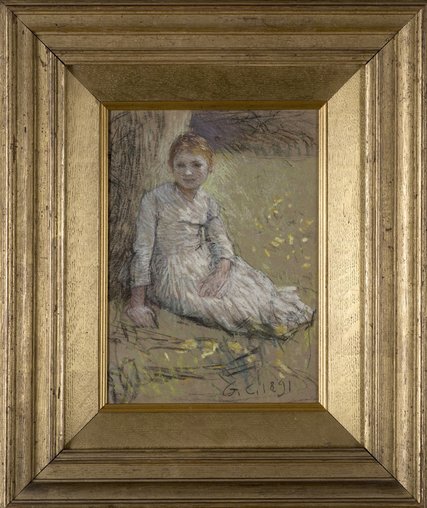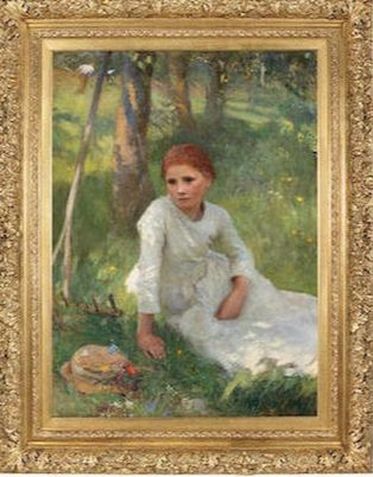
George Clausen 1852-1944
Study of a Girl (Rosie Grimsdale) 1891
Pastel and charcoal on brown paper 9 ½ x 7 inches (24.1 x 17.8 cm)
Signed b.r. 'G.C.1891'
PROVENANCE:
Private Collection.
This beautiful pastel study of a young farm girl sitting languidly in a shaded orchard epitomizes Clausen’s concept of the bucolic idyll, as much as his continued exploration into European post-impressionism. It is a scene that he worked up in 1891 as well as other studies in pencil and watercolour studies (there are four known studies in total), culminating in his magnificent oil Noon in the Hayfield of 1898 (see below).
The first of these is a pencil drawing in the RA collection, a larger watercolour was exhibited as Idleness at The Fine Art Society exhibition of 2012, and a small oil sketch was produced and given to his friend Goscombe John, which now resides in the National Museum of Wales, Cardiff. The present work is, therefore, the only known study in pastel of this quintessential Clausen image.
The medium of coloured chalks gave the artist an ideal way-in to experimenting with the pointillist and impressionist techniques he saw in his European peers. Clausen considered the gestural marks of Gauguin and Van Gogh in particular to be ideal for capturing light, illuminating the content of the image quite literally at a stroke. We see this at play by the staccato touches of coloured pastel he makes in the foreground of the current work, and to the right of the sitter. This is all he needs in order capture the light as it hits individual blades of grass, thereby bringing illumination to the whole composition.
For her part, the sitter - Rose Grimsdale - was a local farm girl in Cookham Dean, Berkshire, where Clausen lived from 1885 until he moved to Widdington, Essex in 1891. He began painting Rose from 1889 and continued to use her image in works even after he left Cookham Dean. Arguably the most famous painting of Rose is Brown Eyes (Tate, London) which Clausen completed in 1892.


